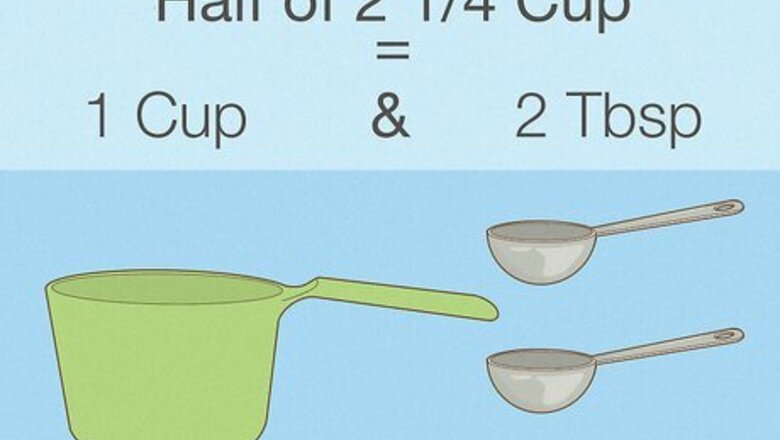
views
What is half of 2 ¼ cups?
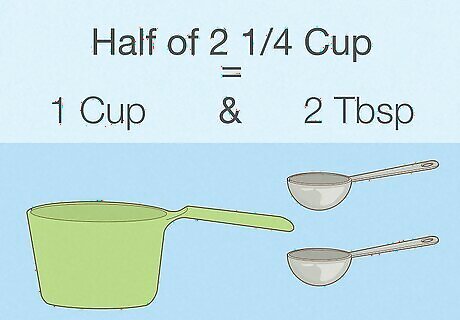
Answer: 1 ⅛ cups or 1 cup + 2 tablespoons. Half of 2 ¼ cups is 1 cup and ⅛ cup. If you don’t have a ⅛ cup, 2 tablespoons is equal to ⅛ cup. To halve 2 ¼ cups, divide the whole number and fraction by 2: 2 ÷ 2 = 1. ¼ ÷ 2 = ¼ × ½ = ⅛. Another way to halve 2 ¼ cups is to convert it to a fraction, then divide by 2. 2 = 8/4. 8/4 + ¼ = 9/4. 9/4 ÷ 2 = 9/4 × ½ = 9/8. 9/8 as a mixed fraction is 8/8 + ⅛, or 1 ⅛.
How to Cut Ingredients in Half
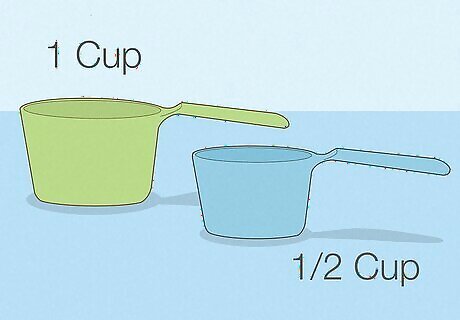
Cut ingredients in half by dividing the amount by 2. If you need to cut a recipe in half, simply divide each ingredient’s measurement by 2. Below are some common measurements cut in half: Half of 1 cup is ½ cup. Half of ¾ cups is ⅜ cups or 6 tablespoons. Half of ⅔ cups is ⅓ cup. Half of ½ cup is ¼ cup. Half of ⅓ cup is ⅙ cup or 2 tablespoons and 2 teaspoons. Half of ¼ cup is ⅛ cup or 2 tablespoons. Half of 1 tablespoon is ½ tablespoon or 1 ½ teaspoons. Half of 1 teaspoon is ½ teaspoon. Half of ½ teaspoon is ¼ teaspoon. Half of ¼ teaspoon is ⅛ teaspoon. Half of ⅛ teaspoon is a dash.
Converting Common Measurements
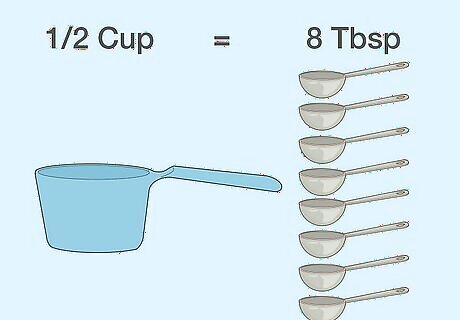
Converting ingredients to tbsp and tsp can make halving a recipe easier. Cutting a measurement in half can be a breeze if you know how many tablespoons or teaspoons it’s equal to. Below are some common conversions: 1 cup is equal to 16 tablespoons. ¾ cup is equal to 12 tablespoons. ½ cup is equal to 8 tablespoons. ⅓ cup is equal to 5 tablespoons and 1 teaspoon. ¼ cup is equal to 4 tablespoons. ⅛ cup is equal to 2 tablespoons. 1 tablespoon is equal to 3 teaspoons.
Advice for Halving a Recipe
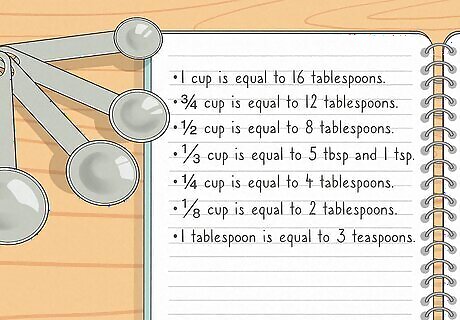
Write down the measurement conversions before cooking. Halving your recipe before you start cooking or baking makes the process smoother and easier. It also helps ensure that you add the correct amount of each ingredient. If you don’t want to convert measurements by hand, use an online recipe conversion tool.
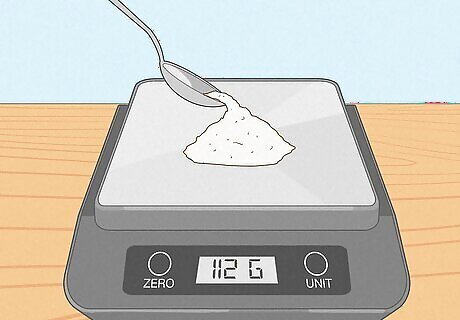
Measure ingredients with a scale. Using a kitchen scale is the most accurate and precise way to measure ingredients. It also makes halving a recipe easier by cutting out the need to convert cup, tablespoon, and teaspoon measurements. For example, a recipe might call for 224 grams of sugar. It’s much easier to divide 224 grams by 2 to get 112 grams of sugar for your halved recipe.
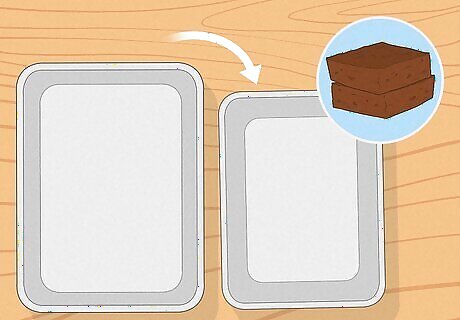
Use a smaller pot or pan. When you halve a recipe, you typically need to use smaller cookware and bakeware than you use for the normal recipe. This helps ensure that your dish comes out right. For example, if you bake a halved recipe of brownies in a pan that fits the whole amount, they might come out crunchy and flat.
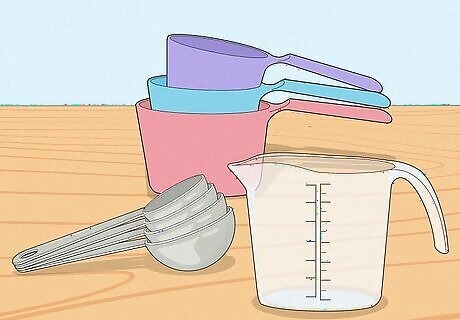
Use dry and liquid measuring cups for dry and wet ingredients. Dry and liquid ingredients have different properties, so ensure your halved measurements are as accurate as possible by using the proper tools. Measure dry ingredients (like flour and sugar) with dry measuring cups and liquid ingredients (like oil and milk) with liquid measuring cups. Dry ingredients can be loosely or tightly packed into measuring cups, which affects their volume. Follow the recipe’s instructions for how to measure the ingredients. Liquid ingredients have the same volume no matter how you pour them or what you put them in. However, using liquid measuring cups with ounce and milliliter measurements makes your conversions more precise. Using a kitchen scale can help make your dry and liquid ingredient measurements more precise and accurate.
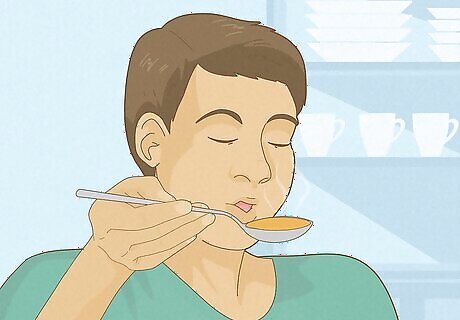
Taste as you cook, especially when adding spices. Make sure your dish is seasoned to your liking by regularly tasting it as you cook. This is especially important when halving the measurements for spices, as you might find that your recipe tastes bland when you cut the spices in half. After adding the halved amount of an herb or spice, try the dish to see if it’s well seasoned or if it needs the whole amount of spices.
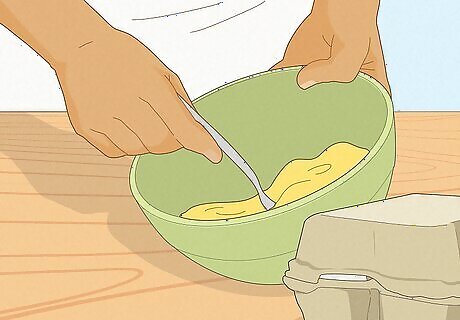
Halve an egg by whisking it and then dividing it in half. If you’re halving a recipe that calls for 1 egg, simply crack the egg into a liquid measuring cup or bowl. Mix the egg white and yolk together with a whisk or fork. Then, pour half of the whisked egg into your recipe. Most large eggs measure about ¼ cup (59 ml) when cracked and whisked. So, half an egg is usually about ⅛ cup or 2 tablespoons (30 ml). Alternatively, weigh the whisked egg using a kitchen scale. Then, divide the weight in half to get a more precise measurement for half an egg.
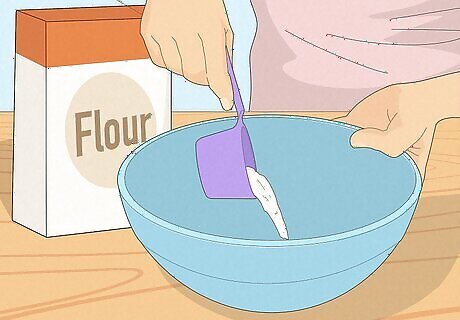
Eyeball measurements when you’re in a pinch. If you don’t have the proper measuring cups and spoons, or you’re on a time crunch, simply fill the cup or spoon in half with the ingredients. For instance, if a recipe calls for ¼ cup of flour, simply fill half of the ¼ cup with flour. Using this method doesn’t give you the most accurate results, so try to use the proper measuring cups and spoons when you can. This is especially important when baking, as it requires more precise measurements than cooking.
Do you need to halve the cooking temperature or time?

Don’t change the temperature, but do slightly cut the cooking time. Halving a recipe can cause a dish to cook faster, so check on it halfway through the cooking time. Just keep the temperature the same to ensure the dish cooks all the way through. If your dish isn’t done at the halfway point, check on it every 5 to 10 minutes until it’s finished cooking or baking.




















Comments
0 comment